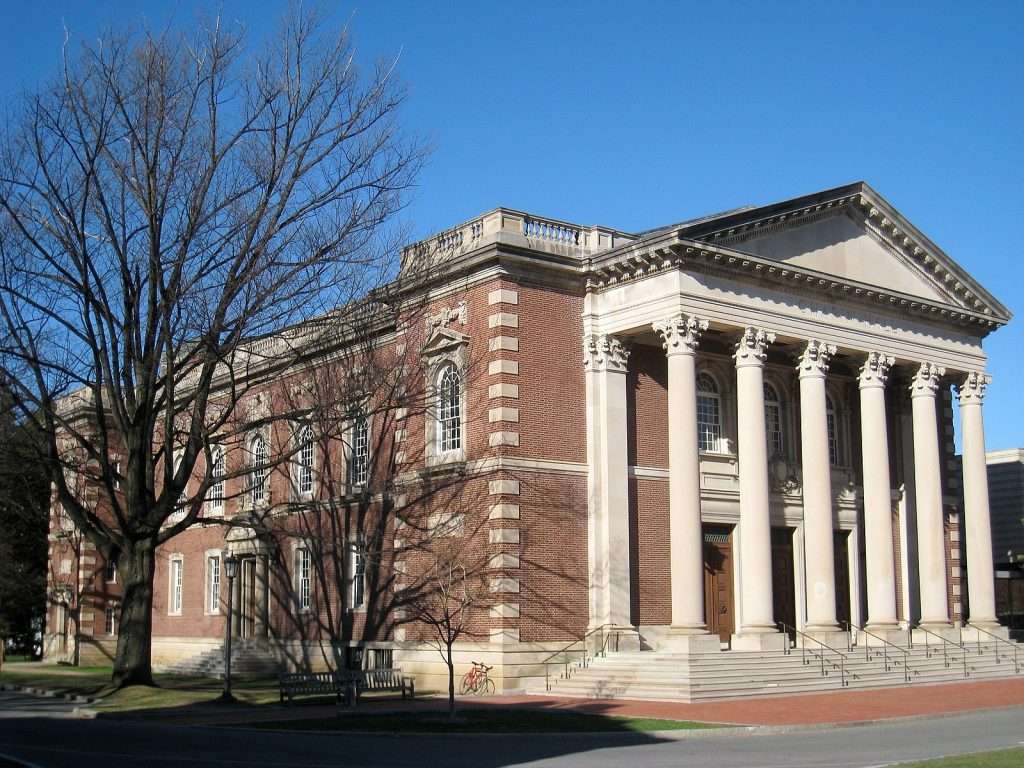College Intel
Williams College Admissions

Williams College is the ideal liberal arts school, one that bridges the quaint comfort of a small-town environment with the academic resources and prestige of an elite institution. Located in the deep reaches of the Berkshires in Western Massachusetts, Williams sits on a campus famed for its austere natural beauty. A $3.53 billion endowment furnishes its student body consisting of approximately 2,200 undergraduates and 50 postgraduates, giving the college an endowment-per-student ratio on par with Yale and Princeton. The contemplative solitude of life at Williams is not for everyone, but U.S. President James Garfield, Nobel Laureate and economist Robert Engle, and Pulitzer Prize and Tony Award-winning composer Stephen Sondheim all called campus home for the span of their bachelor’s.
Williams offers two masters programs in art history and development economics (accounting for that small community of 50 grad students), but its liberal arts division forms the heart of the institution. Thirty six majors are offered in addition to 13 concentrations (their term for academic minors). The college has a longstanding relationship with Exeter College at Oxford University, which informs several aspects of the undergraduate experience. For example, during the “Winter Study” term in January, in which students stay on campus or study abroad for a three week mini-semester, many opt to travel overseas and participate in the Williams-Exeter Programme.
The Oxford influence also bleeds into the curriculum: the tutorial system that predominates at the British university is mimicked at Williams. An extensive offering of tutorials encourages self-directed study, close connections with peers and faculty, and deep intellectual exploration. To graduate, students must complete distribution requirements in “Languages and the Arts,” “Social Studies,” and “Science and Mathematics,” and also a “Writing Skills” requirement, a “Difference, Power, and Equity” requirement, a “Quantitative/Formal Reasoning” requirement, and a “Physical Education” requirement. Current and former faculty at Williams that have taught such courses have included Pulitzer Prize winners Elizabeth Kolbert and Louise Gluck, and National Book Award-winning author Andrea Barrett.
Williams is named after the wealthy Revolutionary War hero Ephraim Williams, who provided for the creation of a free school in Western Massachusetts in his will. The school was originally chartered in 1762, but a pesky institution nearby known as Harvard College pressured the governor of the Massachusetts Bay Colony to revoke the charter so as to avoid competition. It would take another 30 years before Williams College would land on its feet again and receive a new charter. In 1821, Williams affiliates abandoned the fledgling college, which was struggling financially, to move east and establish Amherst College, but it would not be long before Williams began to prosper again.
By the 1960s, fraternities were phased out of campus life, and by 1970, Williams became fully coeducational. In the 21st century, Williams is known for its affiliations with many major museums such as Clark Art Institute, the Massachusetts Museum of Contemporary Art, and Mystic Seaport Museum (which sponsors an Ocean and Coastal studies program for Williams students). Perhaps because of the physical education requirement, intramural, club, and varsity sports draw the participation of one out of every two students on campus, but many others are avid members of the Outing Club, which organizes trips into the mountains. With such a small campus, students form intimate bonds that they carry into adulthood through the Society of Alumni, the oldest collegiate alumni society in the nation.
For admission to the Class of 2027, Williams received 11,258 applicants, 9.8% of whom were admitted. As with admission to any highly selective school, prospective Williams students should research the history and specific details of undergraduate life at Williams in order to demonstrate interest and create a competitive application. The Office of Admission & Financial Aid states that they value applicants who espouse “diverse opinions” and express a commitment to the Williams community. If you have your sights set on Williams but don’t know how to best craft an application that expresses this commitment or showcases your intellectual diversity, Ivy Coach can be your trusted guide.
TOWARD THE CONQUEST OF ADMISSION
If you’re interested in Ivy Coach’s college counseling, fill out our complimentary consultation form and we’ll be in touch.
Get Started